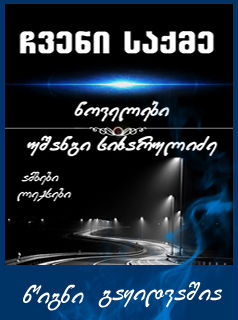EVPATORI Web Resources
გამოკითხვა
მოგწონთ ნოველები - ჩვენი საქმე
დარეგისტრირებული მომხმარებლები
Robtrim
FrankyJ
ჯონი
kote1974
123Nikolozii123
« What Is a Good Bitrate Guideline for MP3 Files? »
კატეგორია: ვიცოდეთავტორი: admin
თარიღი: 2014-10-08 17:39:23
What Is a Good Bitrate Guideline for MP3 Files?
 |
MP3 [
An MP3 is a digital audio file compressed with a standard defined by the Motion Pictures Experts Group (MPEG). MPEG was formed to develop techniques for dealing with digital video; since most video also contains audio, this format was developed as an audio extension of that work. Officially known as "MPEG-1, Layer 3", MP3 is a lossy compression algorithm that uses psychoacoustic modeling to reduce the size of audio files by up to 90%.
Psychoacoustics takes advantage of deficiencies in the human hearing system to throw away digital bits corresponding to sounds that cannot be heard. The human ear cannot hear soft sounds in the presence of loud sounds having a similar frequency; for example, a voice conversation becomes inaudible when a jet flies low overhead. This effect is known as auditory masking, and done correctly, the discarded sounds will not be missed.
MP3 is a lossy algorithm in the sense that the original bits cannot be recreated from the compressed bits. In terms of hearing, however, the format is lossless because the human ear cannot distinguish between a CD recording and a properly encoded version of it. MP3s achieve this transparency at a bit rate of approximately 256 kilobits per second, or roughly one-sixth of the 1.4 megabits per second required by the compact disc format.]
files are compressed audio files [
Audio files are sound files, or files that play a sound when clicked on. One of the most common audio formats is the wave file, or [filenamehere].wav. Another is the MP3 file, or[filenamehere].mp3. The type of audio format used is indicated by the file extension – the last three letters following the dot. Standard audio players included with operating systems will play common types of audio files, but more exotic sound formats might require downloading codecs for the player to extend its capabilities.
The ubiquitous wave format was developed by Microsoft® and IBM®, with Apple® offering up a compatible standard known as the Audio Interchange File Format (AIFF). Both types of audio files will play on IBM and Macintosh computers. WAV and AIFF are two types of lossless audio formats, or audio files that store the original audio bitstream source without any loss of quality. These formats were originally used for operating system sounds, such as beeps, chimes and spoken messages. As people began customizing their systems, short sound clips from movies and television or favorite song snippets became widely available online as wave audio files.]
that are made from audio formats such as the wave (.wav) format. Wave files replicate analog recordings and digital sound files with a high degree of accuracy at the cost of large file sizes, while MP3 files sacrifice some quality for a smaller footprint. The quality sacrificed can be mitigated by several factors in the conversion process. With the right bitrate and configuration, MP3 files can provide extremely high-quality results that make them very close to their original wave files when played on portable audio players.
The balancing act between file size and quality is a somewhat subjective. To an audiophile any difference will be discernible. Others might not be able to tell a high quality MP3 file from its original wave source at all. In many cases the difference only becomes clear if played through a high-quality stereo system where the smallest nuances of the acoustic environment become clear.
MP3 files are primarily targeted for portable audio players. In this arena quality MP3 files come through with astounding sound given their small file size. Since portable players have limited memory, it makes sense that people want their MP3 files to be as small as possible while preserving as much quality as possible.
To this end the single most important factor in the creation of MP3 files is the bitrate. Generally, the more bits preserved per second from the original file, the higher the quality of the MP3 and the larger the file size. A lower bitrate reduces size and quality. The idea is to use a bitrate that results in maximum authenticity without preserving unnecessary data, which only creates larger files without appreciable difference to the ear.
For audio voice recordings such as lectures or language lessons preserved in wave form, bitrates of 32 kilobits per second (kbps) should be acceptable, though 64kbps might provide better quality depending on the source. Voices might sound "flat" at 32kbps, though they will be understandable. A 64kbps MP3 file made from a voice recording should sound nearly identical to the original.
Non-saturated acoustic music that features simple arrangements should get good results with a bitrate of 192kbps. If the music will be played on high quality equipment, you might opt for 256kbps. Music that falls in this category would include ballads, "boy-band" songs, easy listening and folk music. Also the work of many classic artists such as James Taylor, Linda Ronstadt, Joni Mitchell, and Simon & Garfunkel.
To make quality MP3 files from classical music and jazz, the best bitrate depends on the song’s characteristics. Soft jazz can normally be replicated at 192kbps to create a good balance between file size and diminishing returns, though 256kbps might sound better on the home entertainment center. Orchestral classical should do well at 256kbps for portable players, but files of 320kbps might be a better choice if you'll be burning to CD for the home or car.
For saturated music such as hard rock, metal, arena, pop, electronic and house music, 320kbps will give the best results. The greater number of bits per second will preserve more of the complex acoustic envelope.
When possible it is preferable that MP3 files be created using a variable bitrate. This allows the encoding program to determine if a particular frame of music requires the full bitrate. If not, the program reduces data retention for that frame resulting in a smaller file without sacrificing quality. Forcing a program to "over-sample" a frame can produce artifacts.
While this article is intended as a general guideline, one might find that he or she is just as happy with lower bitrates for specific songs or in general. Many factors affect our ability to judge the quality of music, including not just the equipment we use, but our activity when listening. For those who listen to MP3 files when exercising or walking outside, for example, exterior noise will make it more difficult to pick out qualitative differences. Conversely, audiophiles might prefer to sample everything at 320kbps, regardless of their equipment, the music's genre, or listening habits.
If making your own MP3 files, there are also other settings that affect quality. LAME is an excellent MP3 encoder and is free, along with the many graphical interfaces that serve as a front-end for this well-known command line program. LAME allows the user to tweak many settings in order to produce high quality MP3 files in seconds. One can also try various bitrates on a source file to find the best subjective balance between quality and file size.









